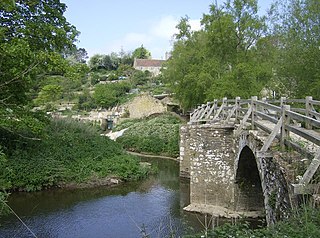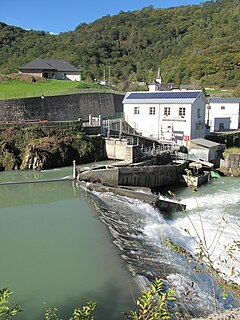
Small hydro is the development of hydroelectric generation facilities on a scale corresponding to river discharge and potential, and which is suitable for local community and industry, or to contribute to distributed generation in a regional electricity grid. The definition of a "small hydro" project varies based on different consideration of what should constitute bottom and top limits from country to country, but most common range, although not binding, in capacity of "small hydro" extend between 1 to 15 megawatts (MW), and can be further subdivide by scale into "mini" (<1MW), "micro" (<100kW), "pico" (<10kW). In contrast many hydroelectric projects are of enormous size, such as the generating plant at the Three Gorges Dam at 22,500 megawatts or the vast multiple projects of the Tennessee Valley Authority. In India, hydro projects up to 25 MW station capacities have been categorized as Small Hydro Power (SHP) projects.

Hydroelectricity is electricity produced from hydropower. In 2015, hydropower generated 16.6% of the world's total electricity and 70% of all renewable electricity, and was expected to increase by about 3.1% each year for the next 25 years.

Manitoba Hydro is the electric power and natural gas utility in the province of Manitoba, Canada. Founded in 1961, it is a provincial Crown Corporation, governed by the Manitoba Hydro-Electric Board and the Manitoba Hydro Act. Today the company operates 15 interconnected generating stations. It has more than 527,000 electric power customers and more than 263,000 natural gas customers. Since most of the electrical energy is provided by hydroelectric power, the utility has low electricity rates. Stations in Northern Manitoba are connected by a HVDC system, the Nelson River Bipole, to customers in the south. The internal staff are members of the Canadian Union of Public Employees Local 998 while the outside workers are members of the International Brotherhood of Electrical Workers Local 2034.
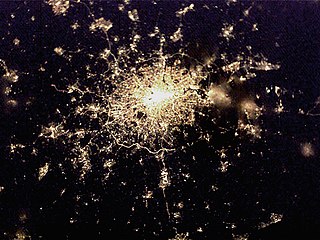
Energy use in the United Kingdom stood at 2,249 TWh in 2014. This equates to energy consumption per capita of 34.82 MWh compared to a 2010 world average of 21.54 MWh. Demand for electricity in 2014 was 34.42GW on average coming from a total electricity generation of 335.0TWh.

The United Kingdom is one of the best locations for wind power in the world and is considered to be the best in Europe. Wind power contributed 18% of UK electricity generation in 2018. Onshore wind power has the lowest levelised cost per MWh of electricity generation technologies in the United Kingdom when a carbon cost is applied to generating technologies. In 2016, wind power first surpassed coal in UK electricity generation, and in the first quarter of 2018 surpassed nuclear power generation for the first time.

The production of renewable energy in Scotland is an issue that has come to the fore in technical, economic, and political terms during the opening years of the 21st century. The natural resource base for renewable energy is extraordinary by European, and even global standards, with the most important potential sources being wind, wave, and tide.
Ontario electricity policy refers to plans, legislation, incentives, guidelines, and policy processes put in place by the Government of the Province of Ontario, Canada, to address issues of electricity production, distribution, and consumption. Policymaking in the electricity sector involves economic, social, and environmental considerations. Ontario's electricity supply outlook is projected to deteriorate in the near future due to increasing demand, aging electricity supply infrastructure, and political commitments, particularly the phase-out of coal-fired generation. Policymakers are presented with a range of policy choices in addressing the situation, both in terms of overall system design and structure, and specific electricity generating technologies.

Solar power represented a very small part of electricity production in the United Kingdom (UK) until the 2010s when it increased rapidly; because for most of that decade new installations were subsidized with a feed-in tariff (FIT), and also because of the falling cost of photovoltaic (PV) panels.
The South Somerset Hydropower Group (SSHG) is a group of 10 owners of former watermills in the South Somerset area of England who are installing micro-hydro turbines for electricity generation. The Group was founded as a result of an initiative by South Somerset District Council, and was the first of its kind in the United Kingdom. The Group won one of the 2005 Ashden Awards, and the concept has been adopted by a number of other similar groups.

Renewable energy in the United Kingdom can be divided into production for electricity, heat, and transport.

Geothermal power is power generated by geothermal energy. Technologies in use include dry steam power stations, flash steam power stations and binary cycle power stations. Geothermal electricity generation is currently used in 26 countries, while geothermal heating is in use in 70 countries.
The electricity sector in New Zealand uses mainly renewable energy sources such as hydropower, geothermal power and increasingly wind energy. 82% of energy for electricity generation is from renewable sources, making New Zealand one of the lowest carbon dioxide emitting countries in terms of electricity generation. Electricity demand has grown by an average of 2.1% per year from 1974 to 2010 but decreased by 1.2% from 2010 to 2013.
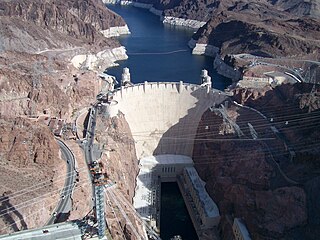
Hydroelectric power stations in the United States are currently the largest renewable source of energy, but the second for nominal capacity. Hydroelectric power produced 35% of the total renewable electricity in the U.S. in 2015, and 6.1% of the total U.S. electricity.

There are more than twenty wind power projects operating in the commonwealth of Pennsylvania. The most productive wind energy regions generally fall in mountain or coastal terrains. The northern portion of the Appalachian chain, including most of Southwestern Pennsylvania, is one of the areas with the highest potential for wind energy in the Eastern United States. The mountain ridges of central and northeastern Pennsylvania, including the Poconos in the eastern part of the state, offer some of the best wind resources in the region.
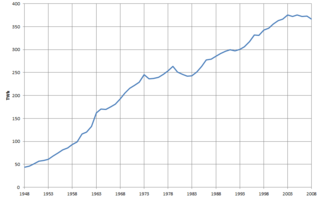
The United Kingdom has a National Grid that covers most of mainland Great Britain and several of the surrounding islands, as well as some connectivity to other countries. As of 2017 the electricity sector in the United Kingdom generation uses around 50% fossil fuelled power, roughly 20% nuclear power and 30% renewable power. Renewable power is showing strong growth, while fossil fuel generator use in general and coal use in particular is shrinking, with coal generators now mainly being run in winter due to pollution and costs.

As of 2012, hydroelectric power stations in the United Kingdom accounted for 1.65 GW of installed electrical generating capacity, being 1.8% of the UK's total generating capacity and 18% of UK's renewable energy generating capacity. This includes four conventional hydroelectric power stations and run-of-river schemes for which annual electricity production is approximately 5,000 GWh, being about 1.3% of the UK's total electricity production. There are also pumped-storage hydroelectric power stations providing a further 2.8 GW of installed electrical generating capacity, and contributing up to 4,075 GWh of peak demand electricity annually.





